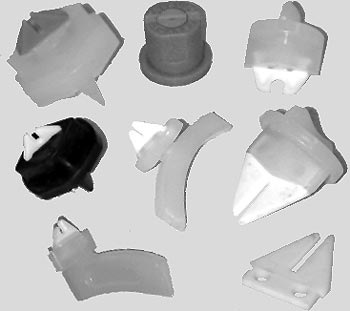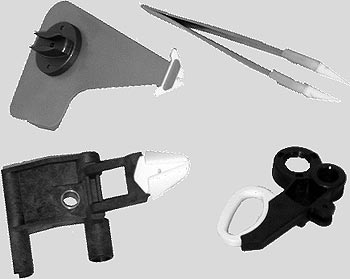8.2.2 Potting
with Plastic
The use of plastics is limited if
- there is friction resulting in wear,
- higher temperatures bring a deterioration in insulation
capacity or
- the mechanical strength falls with rising temperature.
Figure 202: Ceramic component
potted in plastic
Armouring the area at risk with ceramic may
be a solution in these cases. The ceramic insert is placed
inside the injection mould, and is encased and fixed when
the plastic is injected for the component. To achieve the
necessary tolerances of 0.01 mm the insert must usually be
hard machined so that the molten plastic cannot leak out at
the injection stage. The insert will be more effectively anchored
if there are openings in the material and if the insert has
a shape that engages the plastic from behind.
This type of insertion creates a joint with relatively high
mechanical strength, and avoids additional stresses on the
other material. The materials combination of polyamide with
ceramic has been particularly well tried in this context.

Figure 203: Traversing thread guides

Figure 204: Other ceramic components encased
by injection moulding
|

